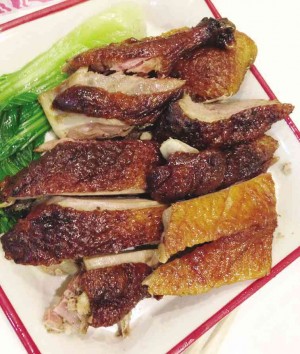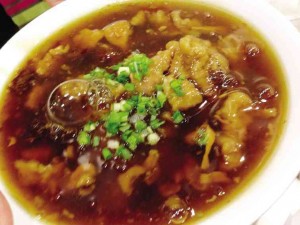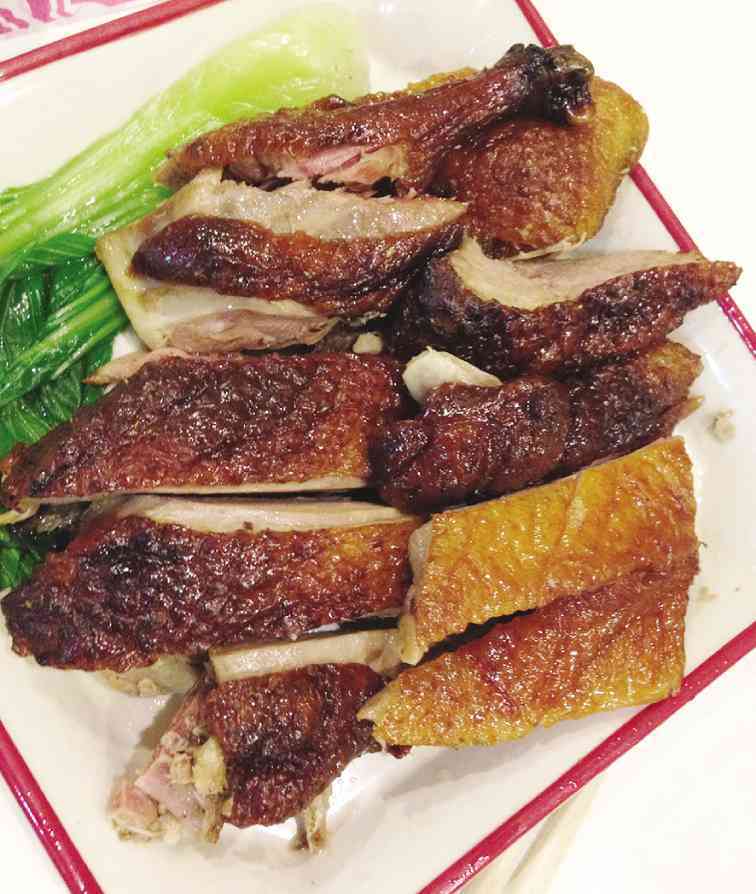
Yesterday I glanced into the mirror and was horrified to discover that I was apparently “pregnant.” I have somehow gained a belly the size of a third trimester gestation without really noticing it happening.
I am depressingly fat. Not just getting there, or putting on weight, or gaining a paunch. I have arrived at the destination, although I don’t even remember getting on the train.
And every effort to diet and shed off pounds has had the opposite effect: Red rice makes me bloat; Diet Coke pumps me up like a balloon; and my feeble attempts at exercise only make me ravenous, I end up eating burger steaks and platefuls of spaghetti afterwards.
The main problem, of course, is that I love food. And food loves me back, in a clingy way, in the sense that it just refuses to leave my body. I’ve sworn off my KFC habit for now, but for most meals (when I’m not out reviewing) I default to my usual Japanese and Chinese quick meals, which I reason can’t be that bad: Japan and China seem to be full of thin, wiry people who can build skyscrapers in two weeks and still have time left over to trim the bonsai.
Japanese food is great, but expensive; if only someone would make a version of Chinese food that was healthy, nutritious, natural, not drowned in fat and unnecessary monosodium glutamate.
As it turns out, someone has. Just as China has its own organic and ethical food movements, there’s no reason, especially given our large ethnic minority population, why our own local Chinese food should be relegated to “heritage” (i.e., fix and nonadaptive) food, big-business Cantonese imports and local greasy spoon takeouts.
Probiotic, organic
Spring, on Benavidez Street in Makati City behind the Asian Institute of Management and around the corner from Stockton Place, is run by third- or fourth-generation migrants, and serves local Chinese food, the kind that the parents and grandparents of local migrants used to eat, rather than the Hong Kong-based glossy creations that the large-scale restaurants serve up.
It’s hip, irreverent and wittily ironic with its chinoiserie aesthetic. And it seems to have people like me in mind.
The meat is probiotic and organic, all the wraps and steamed buns are made in-house (rather than bought frozen from a factory), and there are lots of vegetarian and low-fat dishes on the menu.
I was drooling as I read the menu: I could eat here every day, without having to break the bank, and yet not gain weight. Perfect!
Except for one problem: When we actually ate there, the food was pretty all over the place.
I’m in the minority in thinking so—even the Chinese foodies, who are notoriously hard to please, have been showering praise on this place, hailing its low-cholesterol vibe and anointing it as the guardian of a treasure-trove of Chinese family recipes that were feared to have been lost to oblivion. It’s beloved by everyone, from nearby office workers to families of taipans.

The cuapao, which should be pillow-soft steamed buns with a sandwich-like filling, had gone beyond being stale to being rock hard and crunchy, like overbaked rusks. The roast duck was ancient and shriveled, like a mummy taken from a Han Dynasty tomb, bereft of flavor, impervious to utensils or teeth.
Lomi, a thickened noodle soup full of shrimpy goodness, was a little better, though it quickly lost its structure after only a few bites. There are several possible reasons for this: over-manipulation, rapid change in temperature, and over-boiling. Putting something in the refrigerator and then reheating it will make a thickened soup thin out.
Better ‘maki’
The only dish that was better than what one would be able to get in Chinatown was the maki, pulverized meat clumps in yet another cornstarch suspension. For a good version of this, one would normally go to Mañosa, the lost-in-time food house on Soler Street, behind the Arranque market.
Spring’s version was better: more flavorful, more perky, fresher-tasting.
It was an example of what everything in this restaurant could have been like, rather than lethargic and wilting. Fujianese food already gets a bad rap as the lesser sibling of Cantonese food; it was a pity that the supposedly rejuvenated, new-generation version of it was insipid and lifeless.
The fresh lumpia, or more properly po-pia, was about as good as store-bought gets.
I would normally not give this much space to a small-scale startup that failed to live up to its reputation. But the idea behind it is too good to pass up: that Chinatown food can emerge from within the borders of Chinatown and improve on itself, with better ingredients and innovative cooking techniques and with an eye to contemporary food movements and ideas.
Or that using good ingredients in traditional dishes that often were made to disguise the lack of quality and abundance of ingredients could transform it. Or the very idea that eating out, especially in a Chinese restaurant, could be good for you.
What a shame it would be if this wonderful idea was not followed through by consistent standards of operation and control over quality, and simply left to entropy because of bad management. There are few things more terrible than getting it right and then letting it slip away.
Spring is at G/F, BSA Mansion, Benavidez St., Legaspi Village, Makati City. Tel. no. 4031508.










































